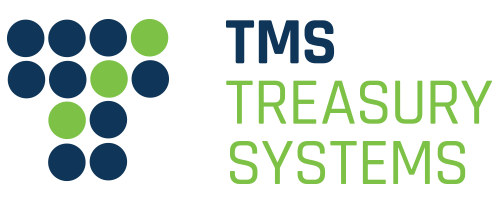
The treasurer is a knowledge worker. Information, judgement and decisions are the essentials of the trade. Working at the interface with the financial markets, and managing the exchange that takes place, the treasurer either takes value from – or gives value to – the market. This knowledge worker can gain or lose considerable amounts for the business.
Knowledge workers cannot function without information. Raw data is not good enough – it has to be informative and add knowledge and insight to the person receiving it. The demand for information is increasing to meet the needs of business management, compliance and reporting. Yet, too much information that creates ‘information overload’ creates another problem. To meet these needs, how can a treasurer work without good systems? In my experience, many do and in this article I try to explain why this might be so, even though at first glance that approach to treasury management appears irrational.
‘We must do something about our systems’
While it may be obvious, it is remarkable how similar treasury is from country to country, and from company to company apart of course from the peculiarities of domestic markets. By that I mean; treasurers grapple with more or less the same issues, regardless of company or country. Most treasuries struggle with problems of information, analyses and reporting. In many respects these are mundane problems. For most treasurers, it’s not a matter of atom-splitting some esoteric aspect of VaR or doing ‘the deal of the year’, it’s the ongoing business of transactions, analyses and information flow. Many treasuries have yet to put in place proper systems for this ongoing day-to-day business.
Many treasuries – even some large PLCs – try to run their treasury business using inflexible systems, spreadsheets and workaround solutions. Often in these situations, there is a high dependency on one or two individuals who manage to produce the ongoing analyses and reporting. Why is this? It can’t be that obviously clever, intelligent people think this is the best way; it has to be that the costs, direct and indirect, are seen as too high.
Few treasuries are in a ‘steady state’ in terms of systems and technology. The reasons for this include corporate change, group companies splitting up, consolidating and so on. Often, it’s just the pressure of old systems that cannot be relied upon any longer or the cumulative effect of a whole series of technology, regulatory or accounting changes. For these various reasons, treasury systems are almost a universal treasury priority and it’s definitely not unusual to be told that ‘we need to do something about systems’. Yet the move to actually make the change can take years.
Making the Leap Forward
Spreadsheets are used because they are a readily available tool, they can be easily changed and initial costs are low. Therein lies their weakness. ‘Treasury by spreadsheet’ can lead to a plethora of fragmented models and reports, regularly changed and, as a result, understood only by the current expert. The result is that there are ongoing risks and costs are stored up for the future.
Treasury cannot afford unseen risks, cash buffers to cover the uncertainty of simple not knowing, and expensive resources tied up in basic reporting. These indirect costs would go a long way to pay for a good TMS. I believe that – at some point – all organisations where treasury is important, will make the leap and adopt a TMS, just as they already have done for payroll and accounting. You could do the accounting on a spreadsheet, but who would advocate that?
At one treasurers conference, I listened to a speaker from a large company rather boastfully convey that their new TMS had cost £1 million to acquire and install. If that were me, I don’t think I would admit it in public! Mega-projects with mega-budgets belong to the past. A TMS can be expensive – but it need not be.
Treasury systems necessarily have a level of complexity. They cannot be like an ATM. There is a challenge for systems vendors to make the acquisition of new systems as painless as possible. This means having the necessary treasury expertise to bridge the gap between the two specialist worlds of IT and treasury. Without this, there are two sets of experts, talking different languages and the project can drag on.
Modern business requires that we are all knowledge workers. Time spent just looking for things or producing reports from raw data is a waste of valuable resource, especially in treasury where there is huge scope to add enterprise-value.
Eddie Fogarty is Managing Director of TMS Treasury Systems.
TMS Treasury Systems is the trading name of FTI Treasury Systems and Solutions Ltd, the Dublin-headquartered treasury systems company.
This article is based on an article by the author first published in the ACT magazine ‘The Treasurer’
